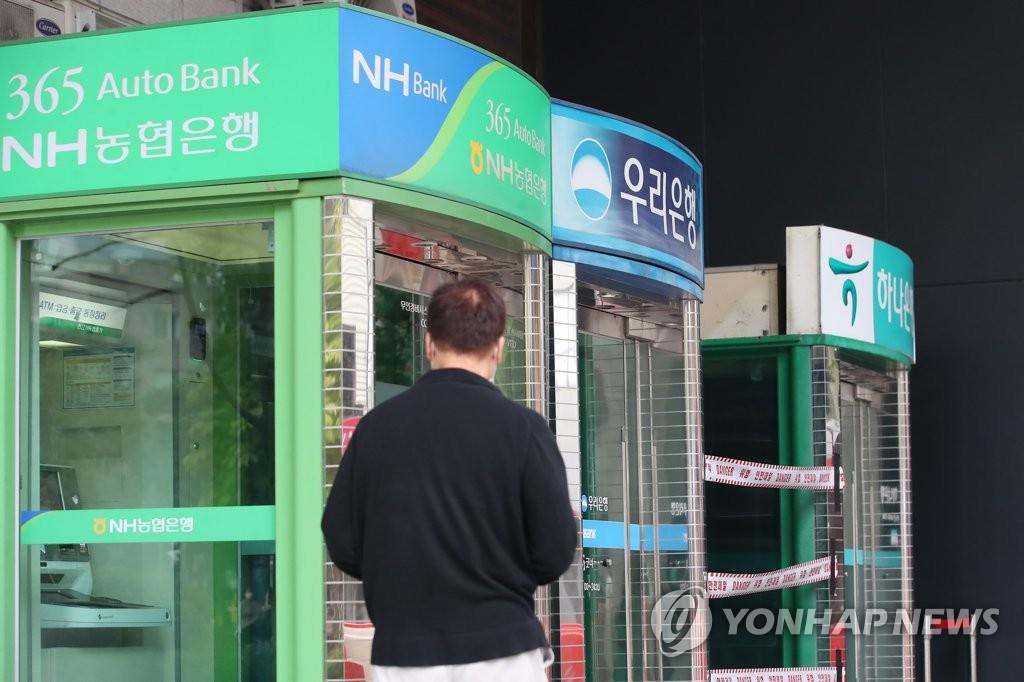Digital transformation drives out bank branches, ATMs: data
By Choi Jae-heePublished : Oct. 5, 2021 - 14:30

Amid the rapid digital transformation brought on by the COVID-19 era, local banks have increasingly turned their backs on brick-and-mortar branches and automated teller machines, data showed Wednesday.
The number of physical bank branches stood at 6,326 as of the end of June, down 10.9 percent from the end of 2016, when the figure came in at 7,101, according to data from the market watchdog Financial Supervisory Service submitted to Rep. Yoo Dong-soo of the ruling Democratic Party.
Meanwhile, the nation shed a combined 11,212 ATMs from the end of 2016 to 32,498 as of end-August, posting a 25 percent decrease.
The decline in the number of offline bank operations and ATMs came as customers preferred using online financial services amid the pandemic.
The value of daily transactions via online banking, including mobile banking, reached 58.7 trillion won ($52 billion) last year, compared with 48.6 trillion won the previous year, according to the data from the Bank of Korea.
Considering the difficulties faced by vulnerable social groups, especially the elderly, to embrace digitalization, the lawmaker called for strong measures to help seniors adapt to digital trends and technologies in the banking sector.
“Financial authorities need to come up with policies to prevent the alienation of the elderly in the finance sector. They could advise local lenders to build specialized bank branches for the elderly or slow down the pace of closing down ATMs, while increasing educational opportunities in the public sector for older adults to improve their digital capabilities,” Yoo said.
The percentage of mobile banking users in their 60s and 70s this year reached 18.7 percent and 6.3 percent, respectively, whereas the figure for 30-somethings surpassed 80 percent, according to the Financial Services Commission.
The number of physical bank branches stood at 6,326 as of the end of June, down 10.9 percent from the end of 2016, when the figure came in at 7,101, according to data from the market watchdog Financial Supervisory Service submitted to Rep. Yoo Dong-soo of the ruling Democratic Party.
Meanwhile, the nation shed a combined 11,212 ATMs from the end of 2016 to 32,498 as of end-August, posting a 25 percent decrease.
The decline in the number of offline bank operations and ATMs came as customers preferred using online financial services amid the pandemic.
The value of daily transactions via online banking, including mobile banking, reached 58.7 trillion won ($52 billion) last year, compared with 48.6 trillion won the previous year, according to the data from the Bank of Korea.
Considering the difficulties faced by vulnerable social groups, especially the elderly, to embrace digitalization, the lawmaker called for strong measures to help seniors adapt to digital trends and technologies in the banking sector.
“Financial authorities need to come up with policies to prevent the alienation of the elderly in the finance sector. They could advise local lenders to build specialized bank branches for the elderly or slow down the pace of closing down ATMs, while increasing educational opportunities in the public sector for older adults to improve their digital capabilities,” Yoo said.
The percentage of mobile banking users in their 60s and 70s this year reached 18.7 percent and 6.3 percent, respectively, whereas the figure for 30-somethings surpassed 80 percent, according to the Financial Services Commission.

















![[KH Explains] Hyundai's full hybrid edge to pay off amid slow transition to pure EVs](http://res.heraldm.com/phpwas/restmb_idxmake.php?idx=652&simg=/content/image/2024/04/18/20240418050645_0.jpg&u=20240418181020)

![[Today’s K-pop] Zico drops snippet of collaboration with Jennie](http://res.heraldm.com/phpwas/restmb_idxmake.php?idx=642&simg=/content/image/2024/04/18/20240418050702_0.jpg&u=)